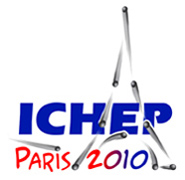Speaker
Mr
Koji Shiomi (for the KOTO collaboration)
(Kyoto university)
Description
The KOTO experiment aims to discover the decay KL -> pi0 nu nubar at the J-PARC 50 GeV Proton Synchrotron. The branching ratio of this decay mode is predicted to be 2.5x10^-11 in the Standard Model(SM). Because its theoretical uncertainty is very small, this decay mode is a powerful tool for measuring Standard Model parameters and searching for new physics beyond the SM. The current upper limit on the branching ratio was set to be 2.6×10^-8 by the KEK-E391a experiment. Because the branching ratio is very small, a high intensity KL beam is required to achieve the SM level sensitivity. We constructed a new KL beam line at J-PARC by summer 2009. In order to determine the properties of the beam line, we carried out a beam survey experiment from November 2009 to February 2010. The most important measurement in the beam survey experiment was KL yield measurement, because it is directly related to the experimental sensitivity of our experiment. Moreover, the expected KL yield for the Monte Carlo simulations with different hadronic interaction models differed up to a factor of 3. We needed to measure the KL yield by an actual measurement.
For the KL yield measurement, we used the KL -> pi+ pi- pi0 decay. The detection system consisted of hodoscopes and electro-magnetic calorimeters. The vertex position and direction of pi+ and pi- were measured by two layers of hodoscopes, each of which consisted of plastic-scintillator bars. The energies and positions of two photons from the pi0 decay were measured by the electro-magnetic calorimeters, which consisted of pure CsI crystals. In our detection system, all kinematic parameters can be solved by assuming momentum balance in transverse direction, because the KL beam is very narrow (it’s solid angle is 7.8 usr). The KL-> pi+ pi- pi0 decay can be identified by the following requirements: the invariant mass of two gammas equal to the pi0 mass and the invariant mass of the pi+, pi- and pi0 equal to the KL mass. The KL yield and the KL momentum distribution were measured by this method. In this talk, the detail of this method and the experimental result are reported.
Primary author
Mr
Koji Shiomi (for the KOTO collaboration)
(Kyoto university)




